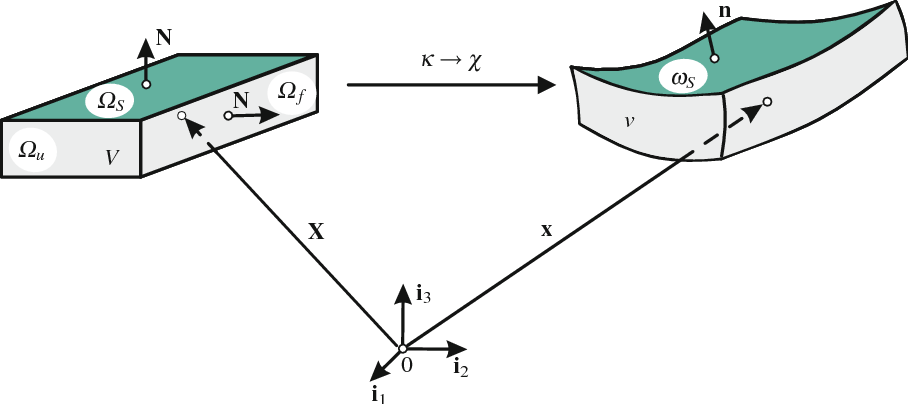ME201 - Solid Mechanics

Instructor
Parag Tandaiya
Section
S1
Semester
Autumn ‘20
Course Difficulty
Moderate (builds on JEE-level mechanics and some concepts from Mech’s DIC - CE 102)
Time Commitment Required
Quite manageable. Being attentive in the lectures and attending tutorials does more than half of your job. In addition to that, spending a few hours (say over the weekend) quickly revising and practicing some questions on the concepts being taught is sufficient. Then it’s just all about brushing up the concepts and formulae before the exams
Grading Policy and Statistics
Fairly lenient. The professor was quite understanding and lenient with the grading. On that note, that doesn’t mean he gave away free grades to everyone, but yes it’s fair to say that everyone got what they expected and in many cases, a bit more than what they expected.
Attendance Policy
Lectures were not compulsory to attend. There were weekly tutorials which had a weightage of close to 1% per tutorial sheet. So it’s always a good idea to attend these tutorials else you lose out on the 10% (weightage of tutorials). No compulsions otherwise, with respect to attendance.
Pre-requisites
None as such. Having done CE 102 obviously helps. But the professor anyway gives a recap of necessary topics from CE 102 for people who haven’t done the course
Evaluation Scheme
Quizzes (4 of them) : 30%
Tutorials (9 in total) : 10%
Assignments (3 in total) : 20%
Midsem : not conducted
Endsem : 40%
Topics Covered in the Course
- Axially loaded members: Statically determinate and indeterminate problems, Thermal stresses
- Bending moment, shear forces and stresses in beams, Singularity function approach
- Equation of equilibrium, Stress transformation, Mohr’s circle, Polar coordinates
- Strain-displacement relationship, Strain transformation, Mohr’s circle, Strain gauges/rosettes, Polar coordinates
- Constitutive Relations: Stress-strain response, Elastic behavior
- Stresses in thin, thick cylinders and rotating discs
- Pure bending, Symmetric cross-section, Curvature, Moment-stress-curvature relationship, Composite beam
Teaching Style
The professor used his already-prepared handwritten notes, and then explained all of it during the lectures. He also used to make annotations and write stuff during the lectures for the benefit of our understanding, it was not just verbal explanation. Prof. Parag maintains a decent pace, so it’s easy to keep up, but at the same time it’s easy to lose track if you miss a lot of lectures. He simplifies things well, and is open to doubts so that’s always a plus. The TAs take the tutorial sessions and are also quite helpful in clearing doubts that students may have. So making good use of these lectures and tutorials especially, is advised.
Tutorials/Assignments/Projects
Tutorial sessions were held every week. Small groups with every group having a TA were formed. A tutorial sheet was handed to the students to solve during the session. Doubts could be asked, discussions were allowed. TAs kept giving hints from time-to-time and always helped out in case anyone faced issues. It’s not like an exam, the one and the only objective of the tutorial is that you learn how to solve the given questions and are able to apply the concepts. At the end of the session, the answers were to be scanned and submitted, which were then corrected by the TAs. Every tutorial had close to 1% weightage, which was given on the basis of these answers. P.S. The 10% assigned to tutorials is actually quite easy to get, given the fact that we can take help from TAs and discuss things.
Assignments were usually sheets having questions on whatever had been taught up until then. It’s easily doable for someone who is clear with whatever is being taught during lectures and tutorials. One of our 3 assignments also involved learning a bit of MATLAB, which served as a new and useful learning for most people.
Feedback on Exams
Questions are asked from what is covered during the lectures and tutorials, so for someone who is thorough with these, you’re fairly well prepared for the exams.
All quizzes and the endsem were subjective-type. For the quizzes, being thorough with the lecture materials and tutorial/practice sheets is good enough. For the endsem too, this is more or less that’s needed. Having practiced a good number of questions is also important, especially for the endsem, so that you are in the flow of solving problems.
Course Importance
It is a prerequisite for the core course ME 202 (Strength of Materials), which runs in the spring semester. ME 202 builds on the concepts of ME 201 and it’s very difficult to perform well in it without a strong grasp of the concepts from ME 201. ME 201 builds the foundation for many advanced topics in Solid Mechanics and hence it is very essential for research in fields like finite element method(FEM).
References Used
An Introduction to the Mechanics of Solids by Stephen H. Crandall was the primary textbook.
Other Remarks
The course was very well-managed by the professor. Was a pretty good experience in terms of learning as well as otherwise
ME 201 Review By: Sahil Kumar